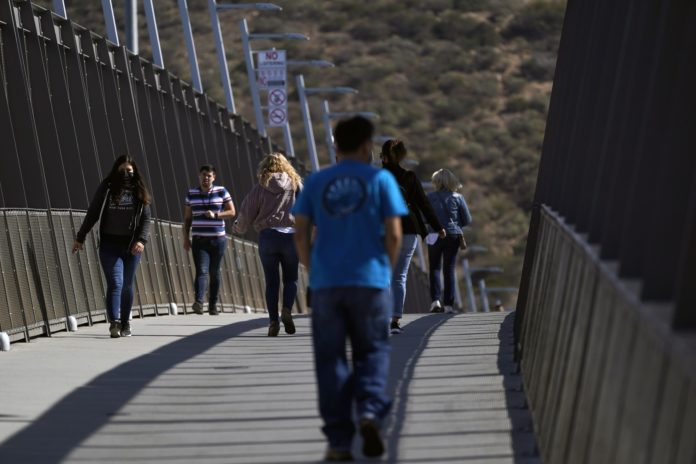
By Ana Ruiz Brictson | Staff Writer
The Biden administration has allowed both of the United States’ borders to reopen by Nov. 8 for those who have been fully vaccinated, with exemptions for specific cases.
On Oct. 12, it was announced that the land borders will be reopening after almost 20 months of being closed due to the pandemic. Those who wish to cross the border on land are going to be required to have all shots of their chosen vaccine.
As of Oct. 18, Canada counts on 71.9% of its population being fully vaccinated. Mexico’s statistics, most recently updated on Oct. 16, say almost 75% of the population is fully vaccinated.
Mexico foreign exchange student Alessandro Velazquez said the news of the reopening of the border has not made a big difference in his life because he is currently studying in the United States.
“I feel indifferent, but because my parents visit every once in a while since the land border is closed, it will be good to have them over,” Velazquez said.
Edinburg sophomore Victoria Gonzalez said she had mixed feelings toward the reopening of the border.
Gonzalez said that she worked in retail for a while and that a lot of the customers who came in were people who crossed the border on land in order to shop for products that aren’t normally found in Mexico. She said she believes the economy will benefit from the reopening of the border given that they will now receive the same amount of customers they used to before.
“I feel good about the border reopening because people are going to get to see their families,” Gonzalez said.
A consequence of the border closure was the separation of families who were used to crossing the border to visit each other. Gonzalez talked about a situation involving one of the schools on the American side near the border, where some children would cross from Mexico into the United States to go to school and then go back — something not everyone could do because of the border closure.
Gonzalez said that in her culture, families tend to plan gatherings where many people come together without respecting social distancing rules, which could be an issue since it could result in the spread of COVID-19 despite the requirement for people to be fully vaccinated.
Since the most common vaccines offered in Mexico and Canada tend to be different than those easily found in the United States, it remains unknown whether there are specific vaccines required to enter the country.





